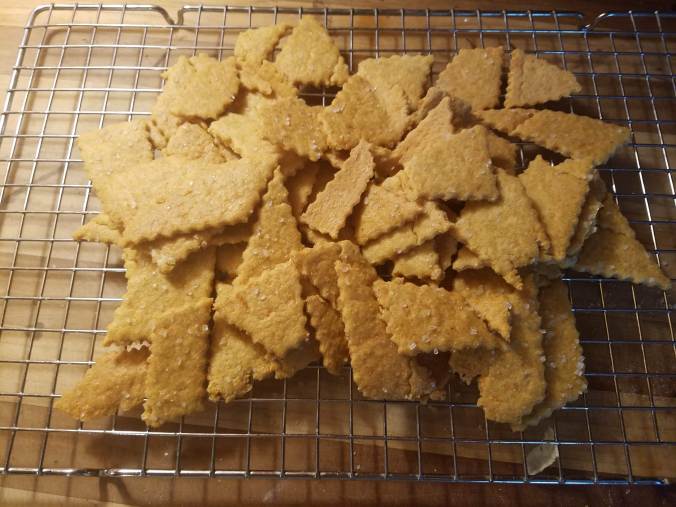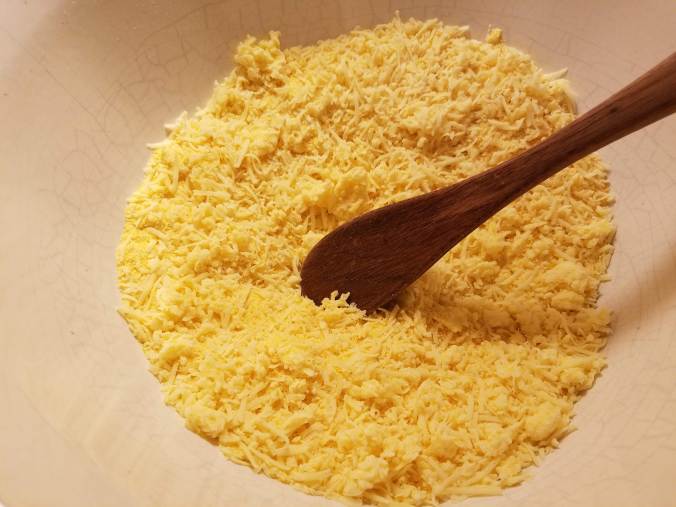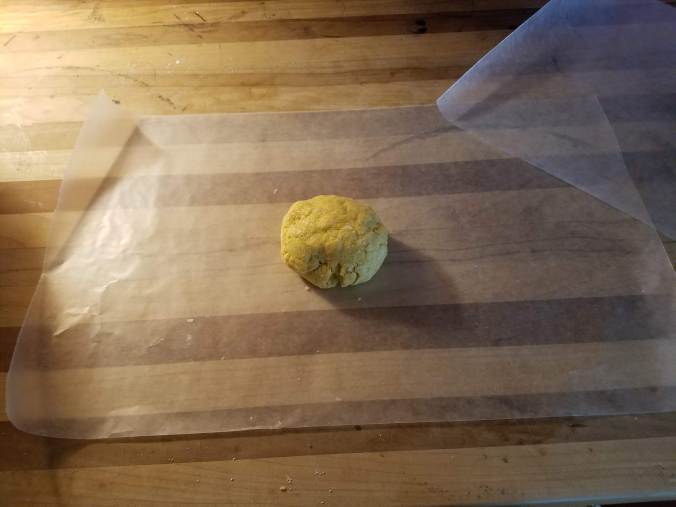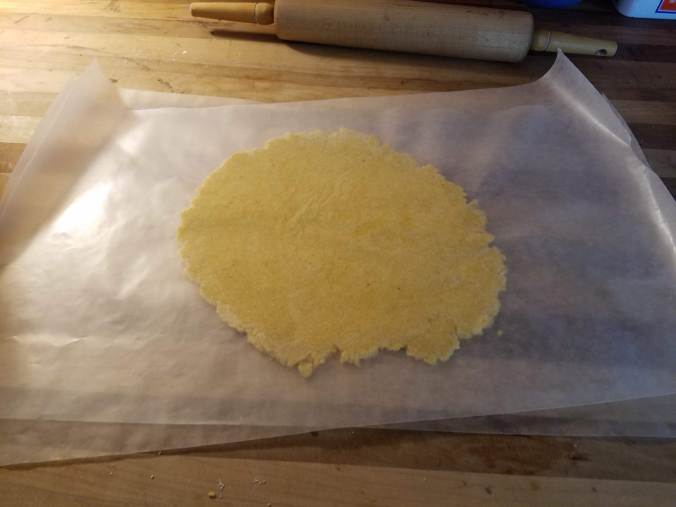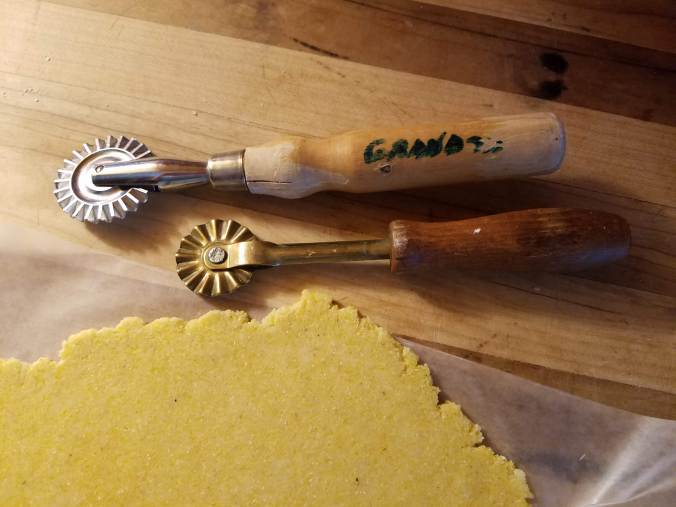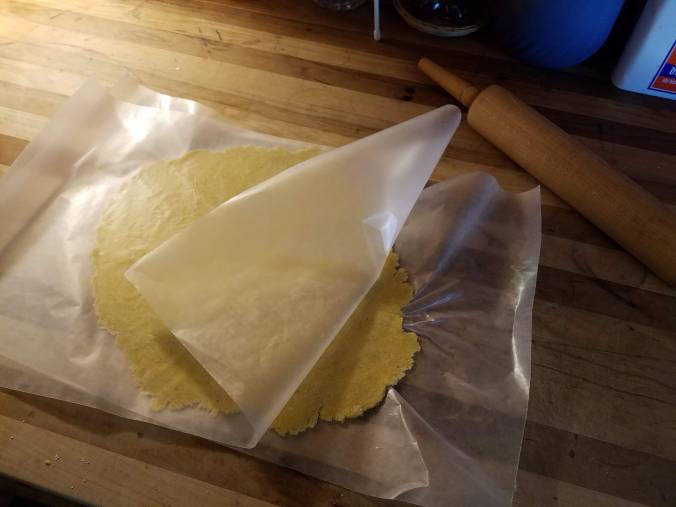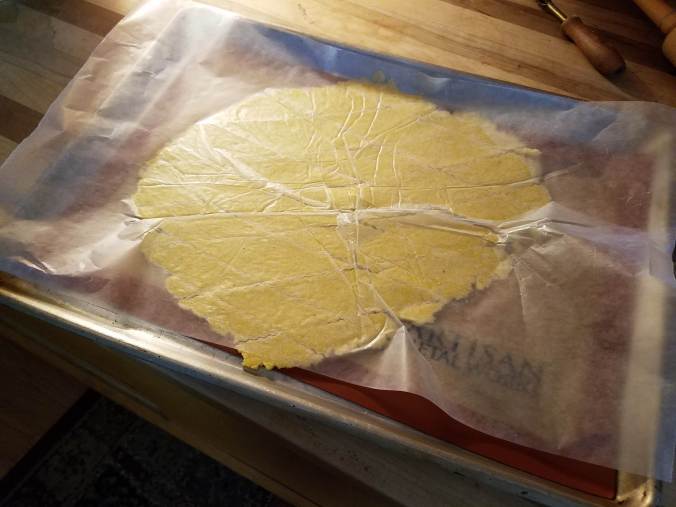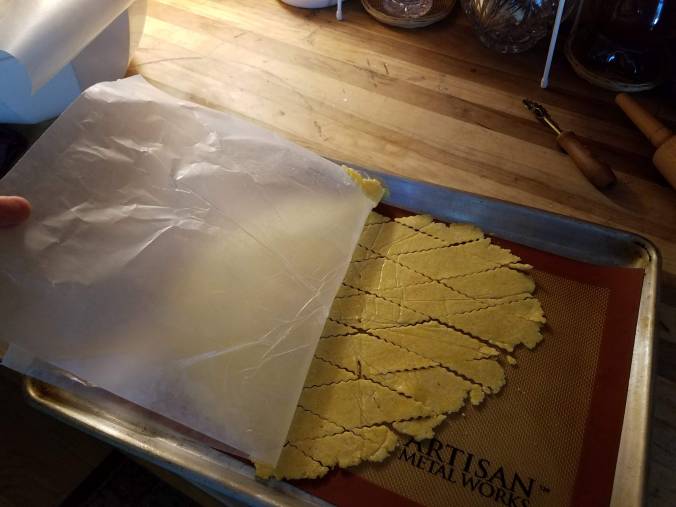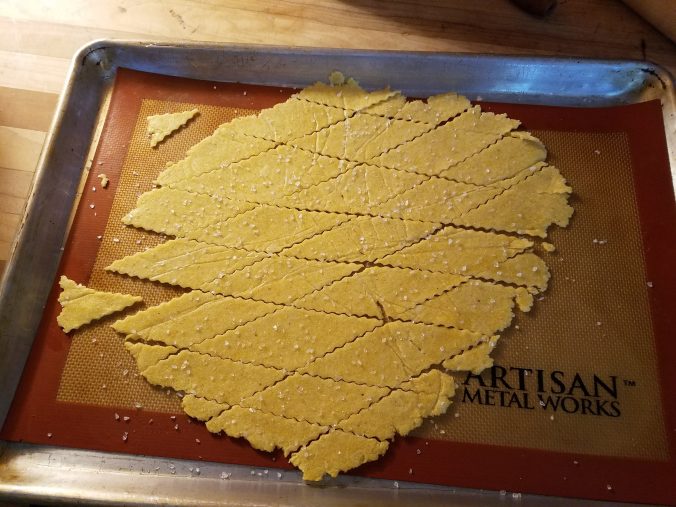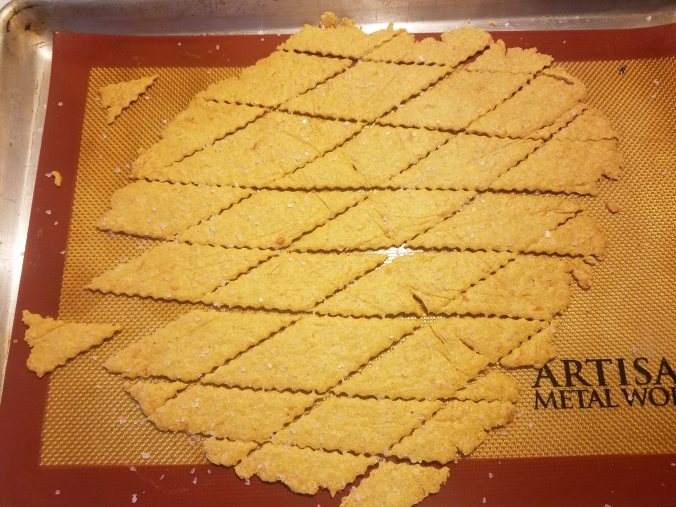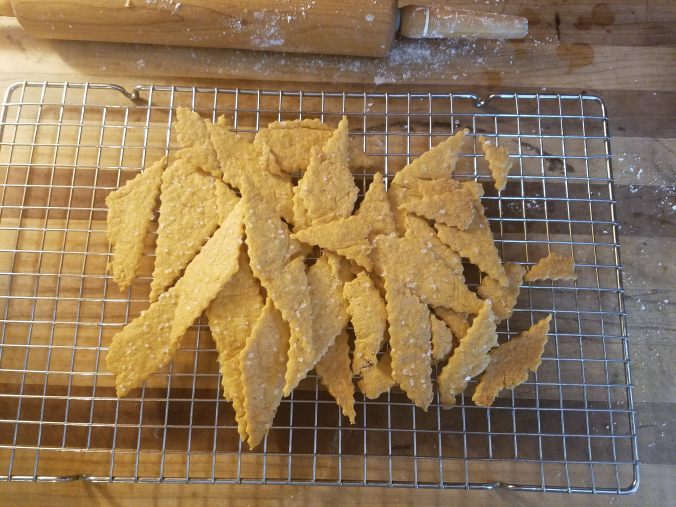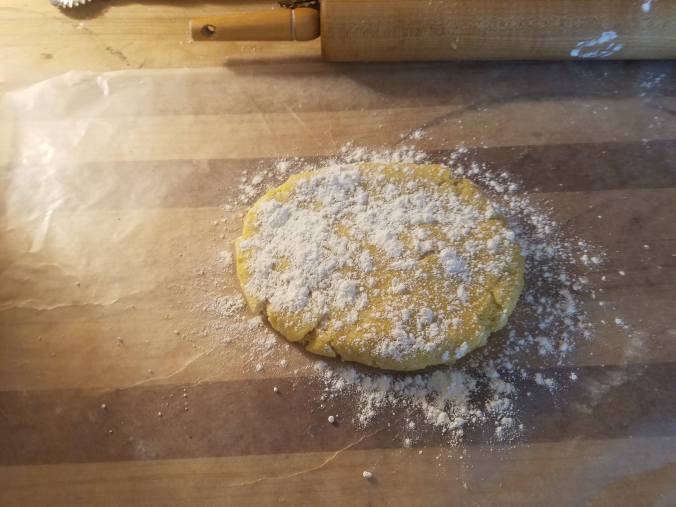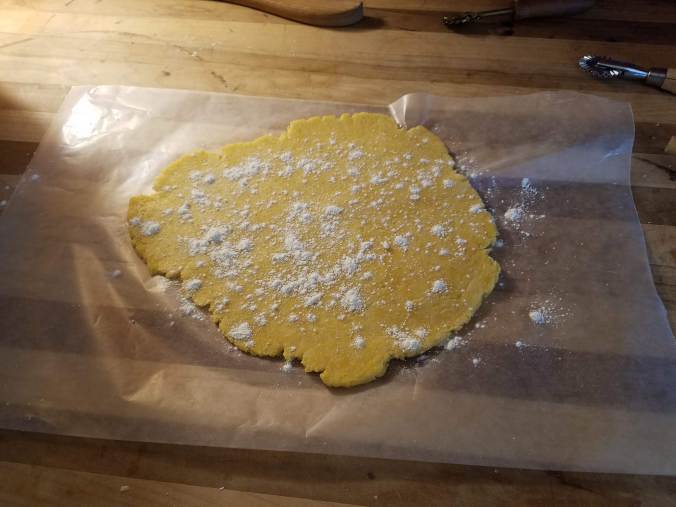The cottage on my property that Bradley and Beth built is a beauty. I am certain that the way its design elements come together visually strikes people as they look through their options on the Airbnb and VROB websites, and that they choose it because of how beautiful it is.

A guest last week who is an architect by trade wrote in his review:
“The house is exceptional in its design. It is nestled among soaring trees with their lush green canopy of leaves, which are awesome to behold from within this all-glass pavilion. The layout is smart for the traveler who needs a few days of accommodation. The kitchen is compact but well equipped. The living space gives a group the chance to spread out. The bedroom is loft-like and from its vantage point, you feel as though you are in a tree house. If you’ve never been to Charlottesville, your first time ought to be spent in the heart of the city. However the second time and forever after, this is the place to be!”
(And he went on!)
The design is not only unique, but pretty much every aspect of the construction is custom-made. The windows, for example, all the trapezoidal and rectangular ones, are made with cherry wood. So is the side door that leads to the deck, also handmade by Bradley. I remember when its pieces were laid out on the basement floor. When it was first installed, it looked like this:
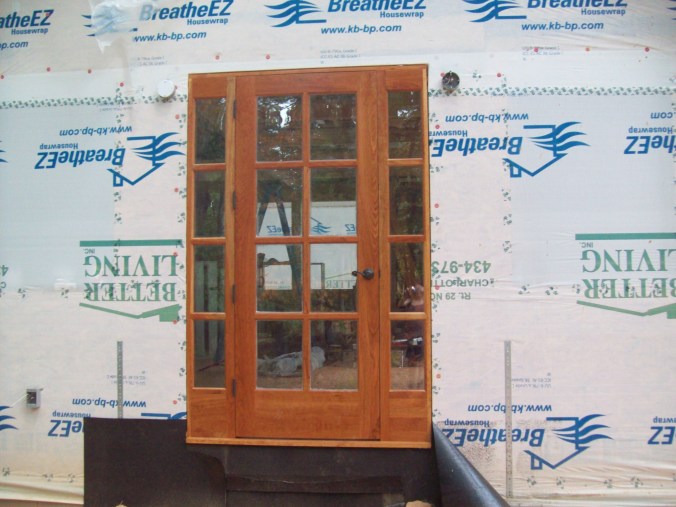
I repeat, this is not a store-bought or catalog-ordered door. Bradley cut, routed and connected every piece. Seven years later, it still blows my mind when I look at the detail and the craftsmanship.
But built things do not last forever in their original condition. When Bradley was here in May, he said, “Mom, if you want those windows to last, you need to refinish them.” I want them to last. A marine grade polyurethane will not protect the wood forever, but it’s the best protection on the market for a few years, when I will do this job again. These are the second-floor windows as I was refinishing them this week (before the rain came!).

When you take care of things, they stand a much better chance of being around, being useful, being still beautiful in years to come. Maybe in a hundred years, this cottage will still be standing tall and gorgeous. I hope so!
Such is not always the case. This past year I had the honor of publishing Hank Browne’s book, Vanishing History, Ruins in Virginia.* Hank, another architect by trade, has a passion for discovering and calling attention to ruined structures like bridges, railroad stations, mills and kilns. The ruins he featured are exceptional in their own way; all are well more than a hundred years old and showcase the workmanship of those who came before us as well as the creative and skillful use of materials. Nonetheless all are abandoned, neglected and in a sad state of disrepair.
The remains of the Wheelbarger-Rumsey Kiln once produced enormous quantities of limestone for use in mortar.

Look at the shapes and colors of the stones that make up the front face of this structure. They were dug out of the earth, hauled to the site and carefully put in place. Together they look like a beautiful puzzle, with each stone placed in its perfect spot, but the work of choosing and fitting them together required a careful eye and lots of hard work.
Same for these stones of the Patowmack Canal. Why some stones are giant blocks and others are thin slabs is a mystery to me, but I do know that the rounded walls were to help the boats navigate into the opening without hitting sharp corners and damaging their hulls. The recesses in the wall on both sides indicate where the doors of the lock were once attached so that the water level could be adjusted up or down.
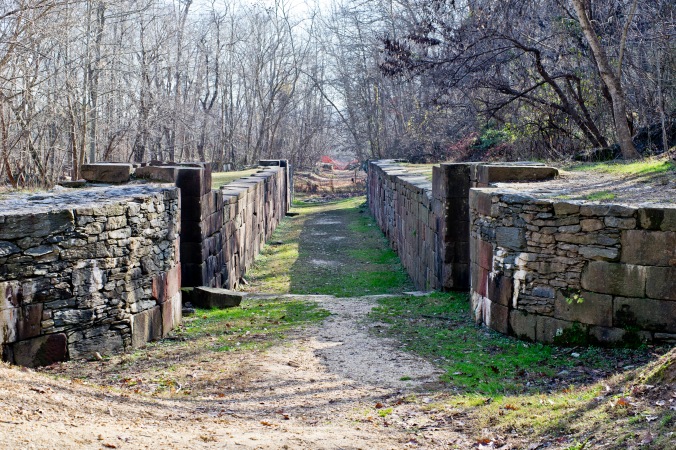
The dilapidating train station at Pleasant Valley was built in 1874; its pleasing lines must have been a welcome sight for those who had come to the end of a long journey. But the hugs, smiles, first words, last words and tears that happened here are long since past. The damage to the right-hand side of the roof is not a good sign. When rain and other unwelcome elements finds their way into the interior, it’s the beginning of the end.
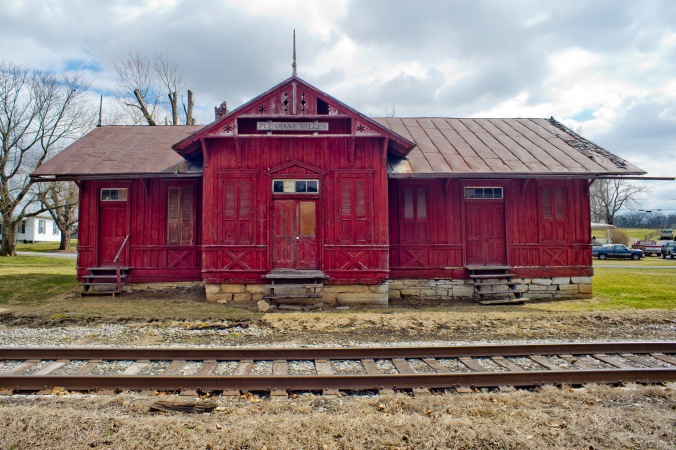
You can surely think of some structures near you that are likewise falling apart. Not all of them can claim exceptional design or expert workmanship, but all were built with purpose and hard work. The people who hauled the lumber and hammered the nails were very likely tired at the end of the day!
It’s hard to look at photos like these and not think (at least a little) about the inevitability of time passing. We see here plainly – and in our own areas undoubtedly – what happens when people stop paying attention, when buildings are untended, neglected or abandoned, and nature is left to its own devices.
This makes me think about other things that need occasional attention or careful tending: not just buildings, but the people around us, the ones we walk alongside day by day. They have their own beauty despite their age, their own mysterious aspects, their vulnerable places too, where unwelcome elements can do incremental damage. Every time you see them or talk on the phone with them or send them a text, you have the chance to do good: to serve them in some way, to speak encouraging words or to tell them how much you appreciate them, to bring cheer.
You don’t have to, but you can. If you do, I’d say the chances of that relationship getting strong or staying strong – not crumbling or dilapidating or falling to ruin – are way better.
*https://www.amazon.com/Vanishing-History-Ruins-Virginia-Browne/dp/0999131001/ref=sr_1_1?ie=UTF8&qid=1535664727&sr=8-1&keywords=vanishing+history+ruins+of+virginia

